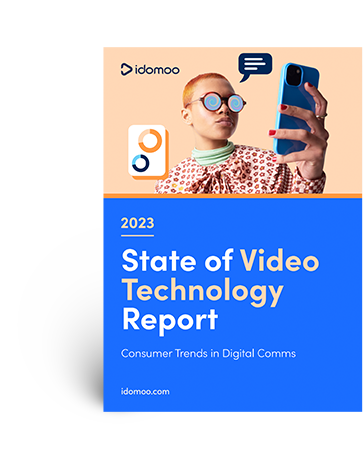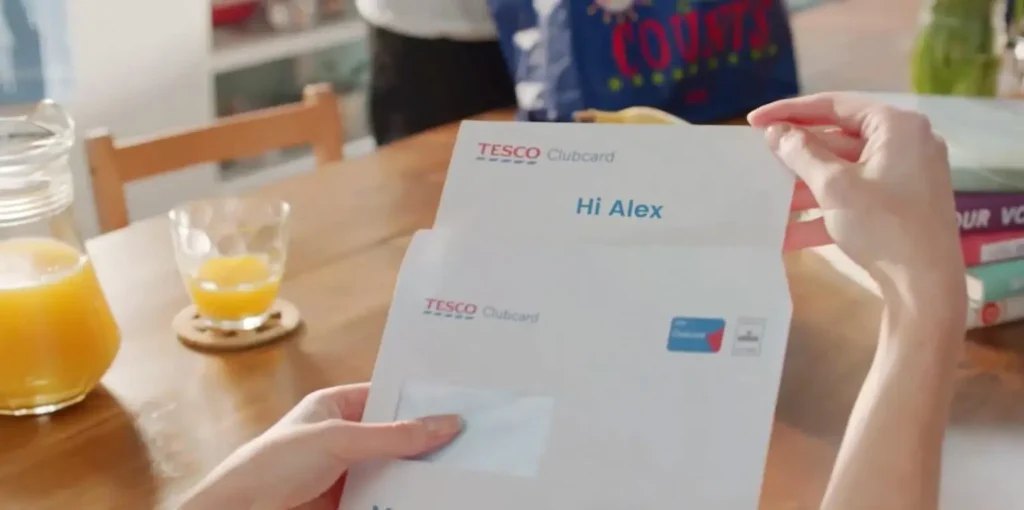Who else loves the feeling of sitting in a crowded movie theater, eagerly waiting for the lights to dim and the screen to come alive? For a few hours, you’re transported to a whole new world — laughing and crying at a bunch of scenes on a screen. How did a mere sequence of moving images manage to stir such strong feelings within you?
That, my friends, is the power of video, which has a unique ability to tap into our emotions like no other.
Businesses, on the other hand, are apparently lacking in emotions and human connections. According to a PwC study, 59% of all consumers feel companies have lost touch with the human element of customer experience. This is why emotional marketing is such a powerful strategy.
At Idomoo, we understand the impact of emotions firsthand. We’ve witnessed the transformative effect they have on marketing campaigns, turning casual viewers into engaged customers and brand advocates. And video, with its ability to tap into our deepest feelings, is the ultimate tool for emotionally-charged creative marketing.
In this blog, we’ll dive into why video is unparalleled in its ability to evoke emotions and connect with audiences, as well as cover several ways to take the impact of video to even higher heights. Ready? Let’s go.
Speaking to Emotions With Video
Harnessing the power of visuals, audio and storytelling, video has an outstanding ability to speak directly to our emotions. Let’s break down the impact of each element.
To start, our brains are wired to process visuals quickly and effortlessly, allowing us to absorb and interpret emotions conveyed through images faster than text alone. In effect, visuals are capable of grabbing attention and leaving a lasting impression. Whether it’s a heartwarming event or a beautiful landscape, a visual approach is one of the easiest ways to stir up emotions.
See the video above, created by SickKids for monthly donors, as an example of a message that’s emotionally compelling and visual. (Grab the Kleenex before watching.) Now imagine how that compares with a written note from Maxen. What about even a photo of Maxen? Those aren’t as engaging as Maxen telling you himself what he can do now because of donors like you.
That’s because video goes beyond visuals alone. Video combines moving images and audio, creating a multisensory experience that resonates with viewers. Combining the right imagery with the right voiceover or soundtrack can evoke powerful emotions, whether it’s nostalgia, excitement or empathy.
However, visuals and audio on their own aren’t what’s great about video. The power of video lies in its ability to convey stories. Humans are natural storytellers, and stories have the ability to grip our hearts and minds, making us connect with characters, situations and messages. Through engaging viewers on an emotional level, video marketing becomes memorable and impactful.
By tapping into viewers’ emotions, whether it’s through heartfelt narratives, inspiring journeys or humorous moments, brands can forge meaningful connections that go beyond traditional marketing tactics.
Don’t believe me? Let’s take a look at the research. As reported in Psychology Today, functional magnetic resonance imaging (fMRI) has revealed that consumers primarily use emotions rather than information when evaluating brands. This means that appealing to emotions in your overall brand messaging is essential, whether that’s through routine communications or ads.
Post on
As the article explains, someone’s emotional response to an ad has a much stronger influence on their intent to purchase than the ad’s actual content does — by a factor of 3-to-1 for TV commercials and 2-to-1 for print ads. Note how there’s an increased intent to buy, and presumably an increased emotional response, when the ad is presented as a video.
In short, video speaks directly to our emotions in a way that other mediums can’t. It enables brands to forge a genuine connection with their audience and leave a lasting mark through stories that not only entertain but resonate with them. It combines the impact of visuals, the power of sound and the art of storytelling to create an immersive experience.
But the journey doesn’t end here. Next, we’ll explore how video gets even better when we elevate it with interactivity.
Enhancing Emotional Engagement With Interactivity
Interactive Videos, which allow for viewer interactions that change the video in real-time, have revolutionized the way brands connect with their audiences. They go beyond the traditional passive viewing experience and offer a unique opportunity to actively involve viewers, encouraging them to participate and immerse themselves in the content.
Imagine watching a video where you can click on different objects to reveal hidden stories or even share your thoughts through an in-player survey. You’re given control of the narrative, enhancing your sense of ownership and personal connection. It’s no longer just a video you’re watching; it’s an experience you have a hand shaping.
For instance, in the Lancôme video below, the viewer is able to call the shots on how the conversation moves forward, which keeps them emotionally engaged and invested in the contents of the video.
These kinds of interactive elements can also enable gamification. By incorporating game elements, brands can create an even more emotionally-charged video experience. Whether it’s unlocking achievements, competing with friends or earning rewards, gamified interactions tap into our desire for challenge and reward, heightening emotional engagement.
For instance, you could have users play an interactive game — maybe have them match pairs of sneakers, in the spirit of the example below — and then claim a discount or freebie right from the video when they win.
Interactive video campaigns like these successfully harness the power of interactivity to elicit strong emotional responses from viewers. By actively engaging with the content, viewers feel more connected and invested in the message being conveyed. The approach creates a highly engaging experience that resonates with viewers long after they have finished watching.
By embracing interactivity, brands can create captivating video campaigns that break through the noise and forge genuine connections with their audience.
Personalization: A Deeper Connection
When it comes to emotionally charged creative marketing, one size definitely does not fit all. Understanding and catering to your customers’ unique preferences is the key to building a deep emotional connection. That’s where personalization comes into play.
Personalized Videos allow you to tailor content specifically for individual viewers, making them feel seen and understood. By leveraging customer data, you can create video experiences that resonate on a personal level, evoking powerful emotions in the process.
Picture yourself receiving a video that speaks directly to you, addressing your needs, interests and preferences. It’s like having a conversation with a brand that truly empathizes with you. This level of personalization goes beyond superficial efforts and towards a contextual and seamless experience that customers can appreciate and value.
Take this Personalized Video by the University of Dayton, for example. They went above and beyond to break down each student’s financial aid package in a clear and engaging video. It’s easy to imagine prospective students being struck with feelings of relief and gratitude over the university’s efforts to explain their aid in a personalized manner.
Additionally, when your audience sees themselves reflected in the content, they are more likely to engage, respond and ultimately convert. We’ve seen proof of this through the many Personalized Video campaigns we’ve helped launch.
Here’s a peek at some results from past videos:
- 10x higher engagement
- 9x conversion uplift
- 17x ROI
Whether it’s explaining a new customer’s unique service plan or providing personalized recommendations, Personalized Videos are capable of evoking stronger emotional responses and driving impressive results.
Want to take it a step further? In the next section, we’ll delve into customization, in which customers take the reins in designing their own experience, granting them even greater control over their journey.
Letting Users Customize Their Video Experience
In today’s world, consumers crave tailored content and control over their experiences. The demand for customization has expanded beyond product preferences to encompass the way consumers engage with brands.
In a way, customization combines the best of both interactivity and personalization, empowering viewers to take active control and craft an experience according to their own tastes. With customizable videos, users can input their own data an.
When viewers are able to customize video content, something magical happens. They feel a sense of ownership over the content, a sense of pride and investment that amplifies the emotional impact and fosters a deeper emotional connection between brands and consumers.
In other words, it’s no longer just a one-way communication. It becomes a shared experience where viewers engage and enjoy a custom experience.
By embracing customization, brands demonstrate empathy for their customers’ desires and preferences. In return, they reap the rewards of higher engagement and brand loyalty as passive viewers become active participants.
Imagine, for instance, how much more excited a customer would be about a product advertisement if they were given the option to customize colors, features and more right from the video player. Plus, as they customize it, helpful details about pricing and benefits would update in real-time, providing them with the information they need to make a decision quickly.
Try it for yourself below.
From user-generated videos to video calculators to video form fills, there are countless forms of customized videos to take advantage of. The sky’s the limit!
Lights, Camera, Action: Ignite the Emotional Spark With Video
By tapping into the power of human emotions, businesses can forge deep connections with their target audience and drive meaningful engagement. And when it comes to unlocking the full potential of emotional engagement, video emerges as the ultimate language to speak to your audience.
Video content allows you to tap into the human experience on another level. Its combination of visuals, audio and storytelling has the ability to create an emotional journey that resonates deeply with viewers. By incorporating interactivity, personalization and customization, you can take that emotional connection to new heights, drawing your audience in even deeper.
So, whether you’re aiming to evoke tears of joy, goosebumps of excitement or smiles of delight, it’s time to harness the power of video in your marketing strategy. Schedule a call to Idomoo for a free demo of our Next Generation Video Platform and let us help you create unforgettable video experiences that will leave your audience craving more.







